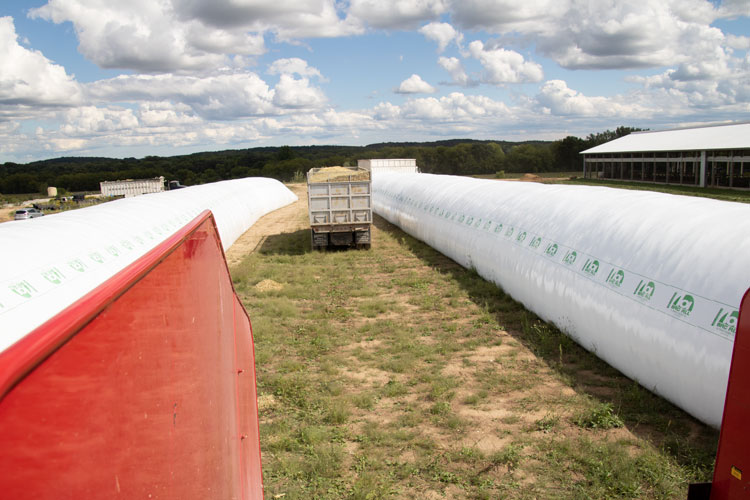
As the harvest season comes to an end, farms may find themselves with excess forage, the right amount of forage, or not enough forage to feed their herd in the year ahead.
The situation that worries dairy nutrition specialist Mike Hutjens the most is a farm that doesn’t know how much forage it needs, and as a result, is unsure if forage supplies are adequate.
“If you are a dairy farmer, and you haven’t done a feed inventory, do it now,” he said during the November Hoard’s Dairyman webinar. Hutjens, a professor emeritus with the University of Illinois, co-presented the webinar with Mike Rankin, managing editor of Hay & Forage Grower magazine.
Hutjens shared a straightforward calculation to determine a herd’s forage needs. First, assume a 1,400-pound mature dairy cow eats 2% of its body weight in dry matter (DM) per day. Hutjens said this number applies to both milking and dry cows, understanding that the two groups will likely consume different combinations of forages.
This equates to 28 pounds of DM per cow per day. That can be multiplied by 365 days for a total of 5.1 tons of DM per cow per year.
Next, shrink must be factored in. Hutjens used a shrink value of 6%, which he said is a good number for corn silage but admittedly a low-end estimate for hay or haylage. With shrink, the need comes to 5.5 tons of DM per cow per year.
Then, if a farm is raising replacements, their feed needs must also be calculated. If farm-specific numbers aren’t available, add another 30% of DM per head. Hutjens said this number may be lower if a farm is culling heifers and raising fewer replacements.
When factoring in heifers, this brings DM forage needs to just over 7 tons per cow annually.
When forage inventories are short
If a farm needs to make their forage inventories last longer, forage extenders are a viable option.
“Forage extenders can be used to limit dry matter intake in certain groups of cattle,” Hutjens shared. He said they are also a way to control body condition and weight gain in cows nearing the end of lactation, and these ingredients can slow the rate of passage, which may improve feed efficiency and digestibility. In some cases, they are also a source of effective fiber.
Straw, cornstalks, and low-quality legume grass forages (with a relative feed quality or RFQ below 100) are examples of forage extenders, noted Hutjens.
He provided the following guidelines for using forage extenders:
- Lactating cows: 0.5 to 2 pounds per day. “If you go higher than that, I am afraid we’ll lose dry matter intake,” he said.
- Dry cows: 30% to 33% of the ration dry matter.
- Older heifers (over 12 months of age): 15% to 25% of the ration dry matter.
To learn more, watch the November Hoard’s Dairyman webinar, “A feed and forage outlook.” This webinar was sponsored by Kuhn.








